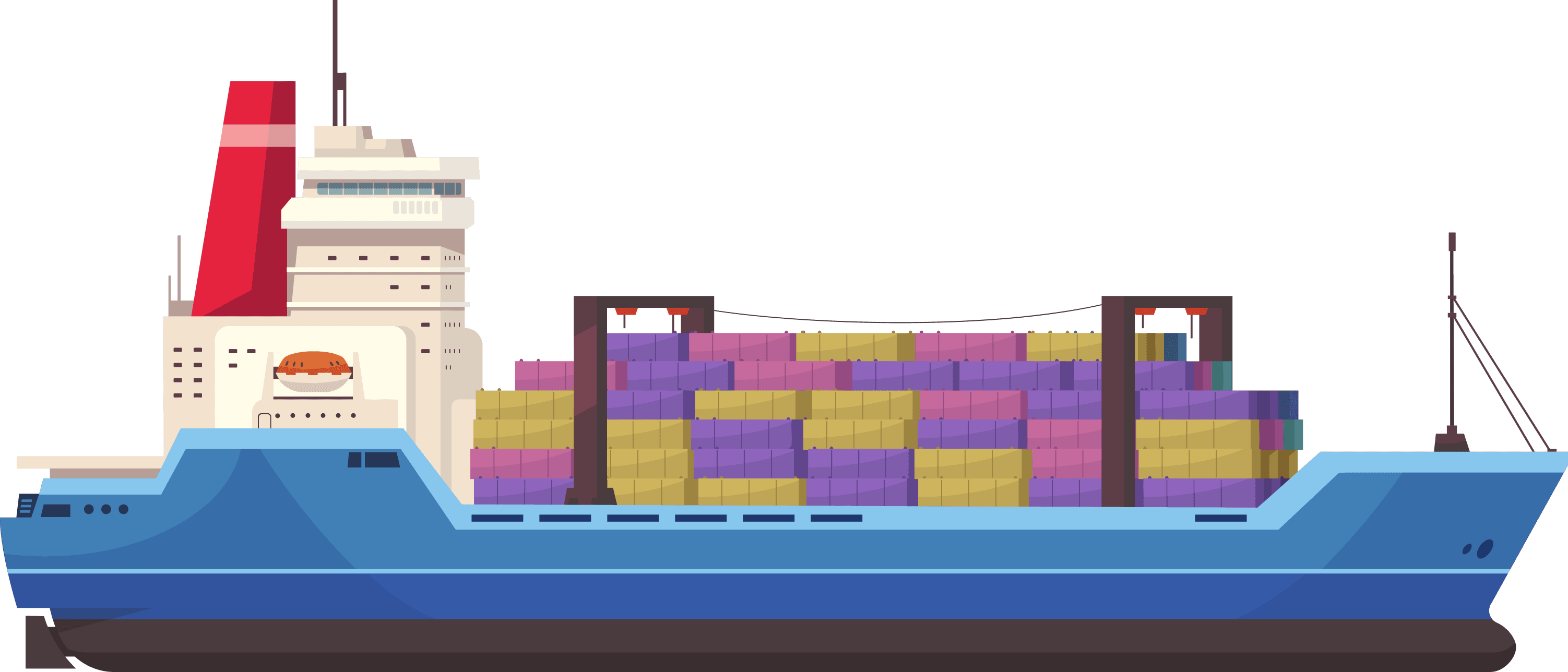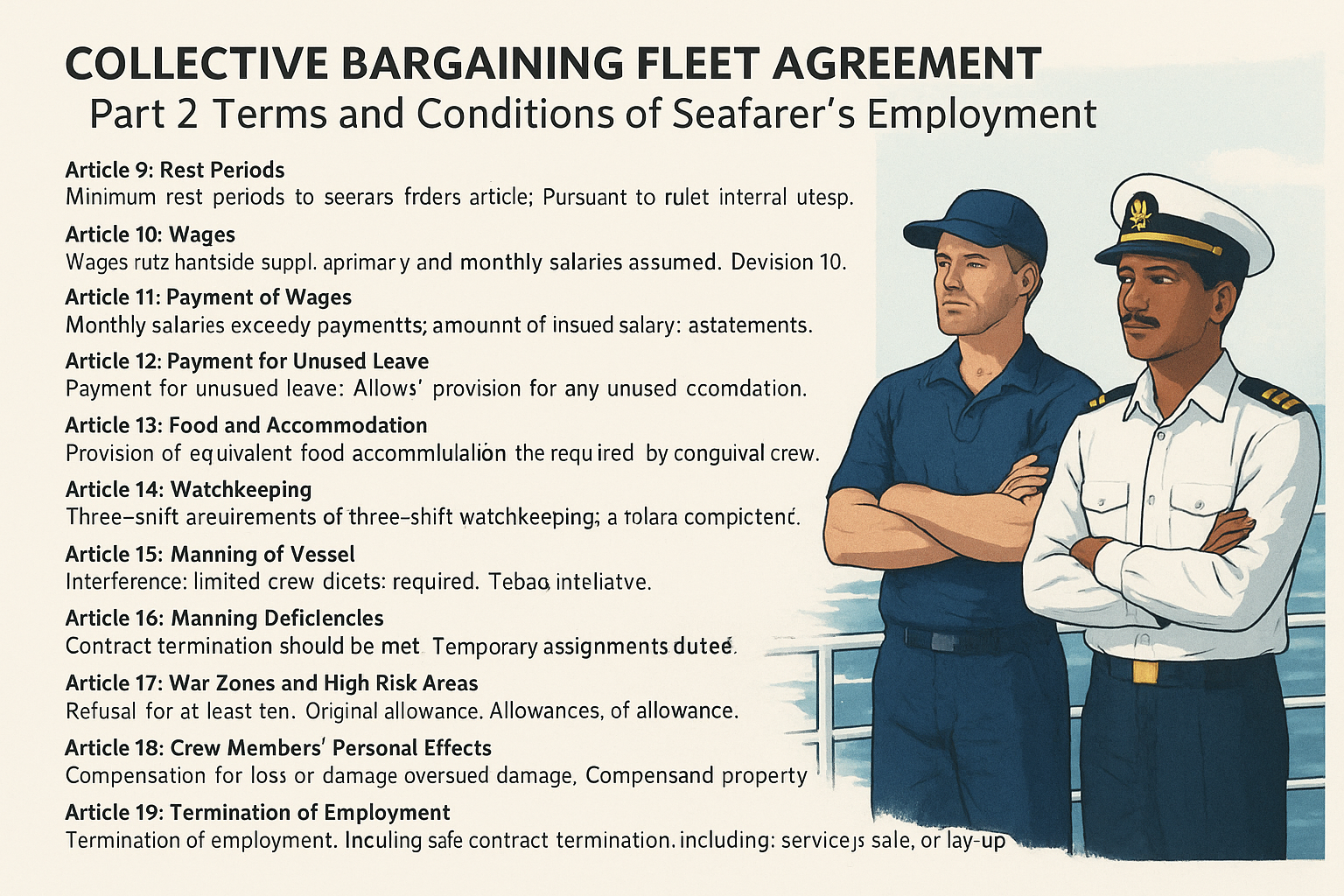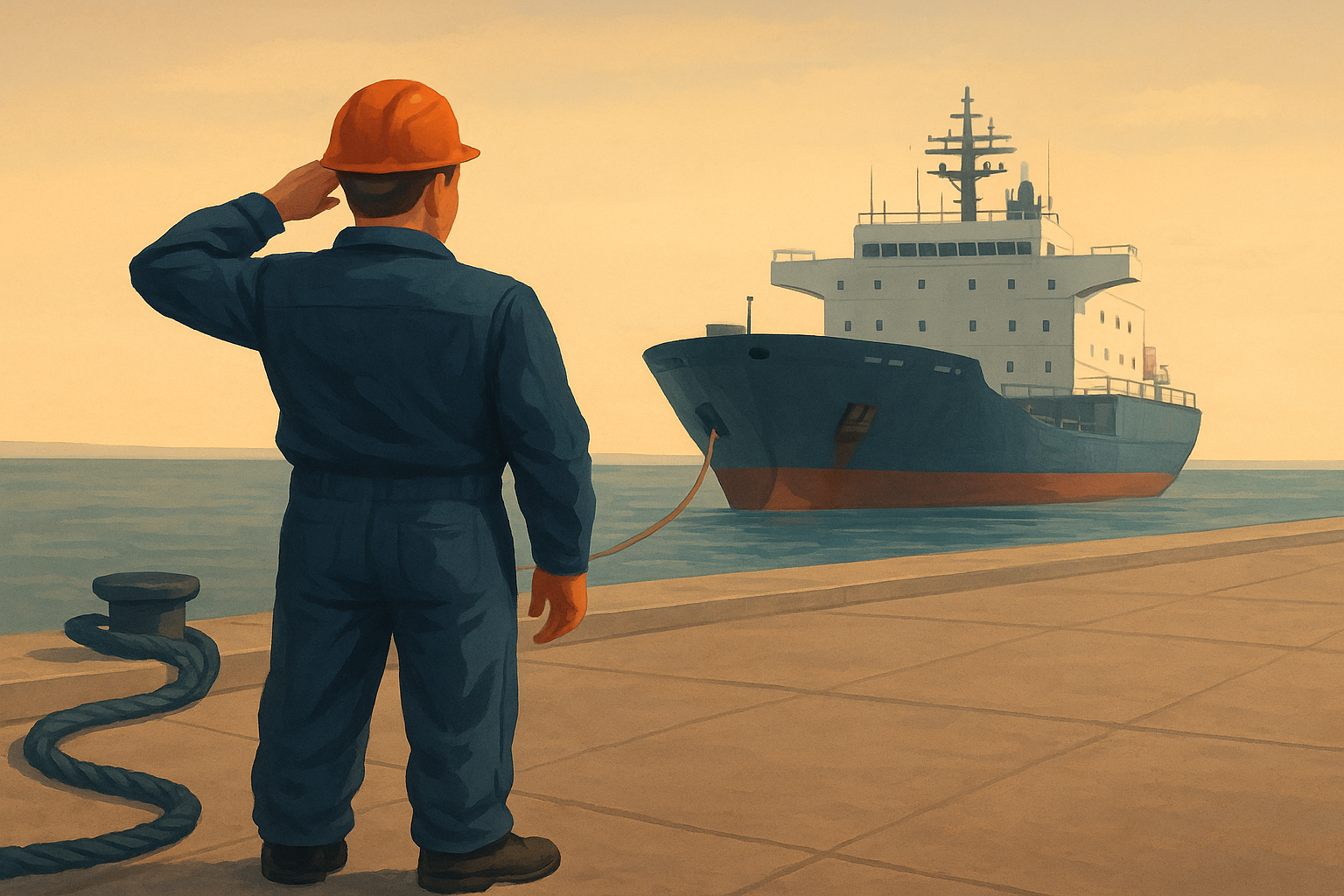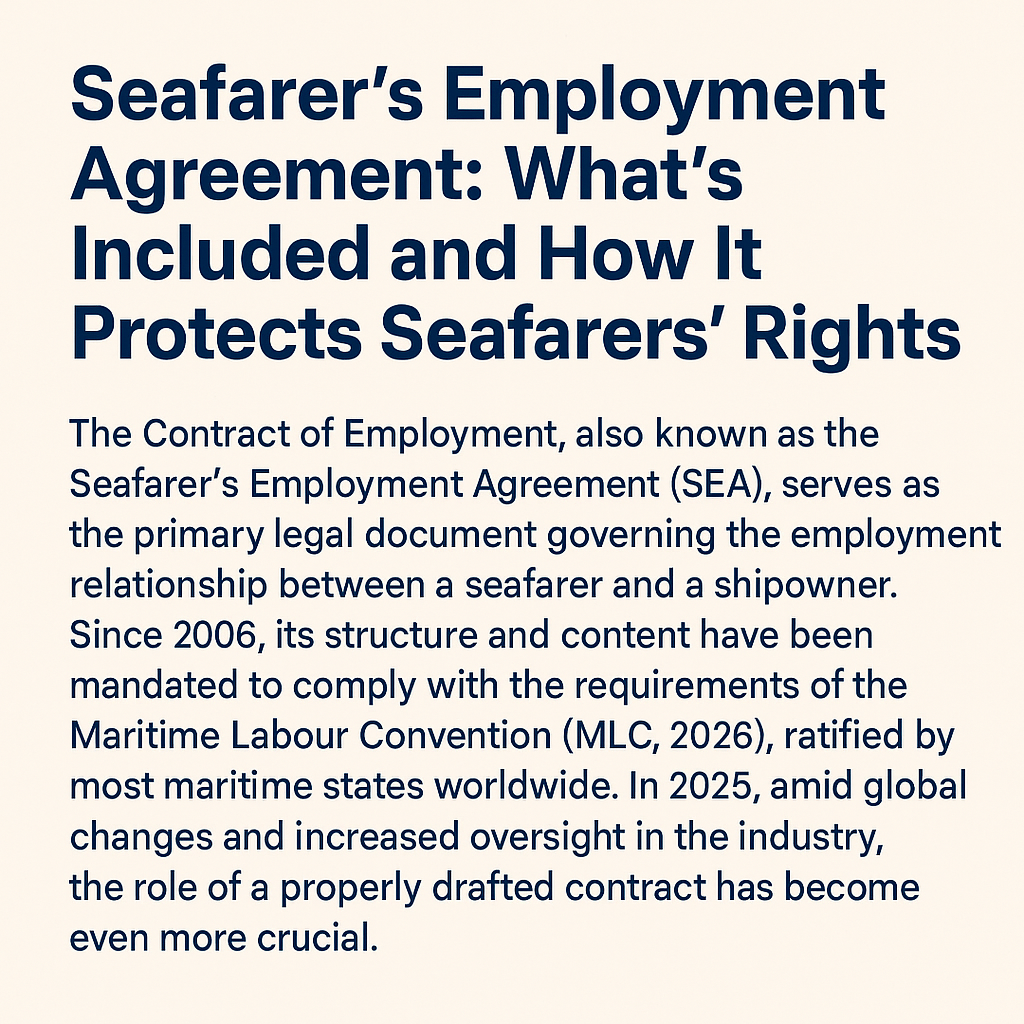Dual-Fuel Two-Stroke Main Engines in the Modern Merchant Fleet
The transformation of the global shipping industry toward cleaner, more efficient propulsion systems has accelerated over the past decade. At the heart of this transformation stands the dual-fuel two-stroke main engine, a technological breakthrough that combines traditional marine diesel performance with the environmental benefits of liquefied natural gas (LNG). This system is now the standard propulsion choice for many newbuilds in the merchant fleet — from container feeders to large bulk carriers and LNG carriers — redefining efficiency, reliability, and sustainability at sea.
1. The Two-Stroke Principle
A two-stroke marine engine completes its power cycle in only two piston strokes — one revolution of the crankshaft — unlike a four-stroke engine that requires two revolutions. This configuration enables each downstroke of the piston to generate power, resulting in very high torque at low revolutions. Because of this, two-stroke engines are ideal for large ocean-going vessels: they can directly drive the propeller shaft without reduction gears, offering maximum mechanical efficiency and excellent propulsion control at low speeds.
The typical low-speed two-stroke engine, such as the WinGD RT-flex or MAN-B&W ME-GI series, operates at around 70 to 120 revolutions per minute, with cylinder bores up to one meter and total output exceeding 10,000 kilowatts per unit. Despite their massive size, these engines are remarkably efficient, converting roughly 50% of the fuel’s chemical energy into mechanical work.
2. Dual-Fuel Concept and Operation
The defining feature of a dual-fuel engine is its ability to operate on two different fuels — usually LNG (methane) and marine gas oil (MGO). This flexibility is crucial in a global market where LNG bunkering infrastructure is still developing and conventional fuels remain widely available.
In gas mode, the engine burns LNG in a lean-burn, low-pressure process. A small amount of diesel fuel — typically 1–3% — acts as a pilot ignition source. The result is a cleaner combustion with significantly lower emissions of sulfur oxides (SOₓ), nitrogen oxides (NOₓ), and particulate matter. When LNG is unavailable, the same engine can seamlessly switch to full diesel operation, maintaining power and reliability without hardware changes.
This dual-fuel architecture is managed by an advanced electronic control system that adjusts injection timing, fuel quantity, and air-gas mixture with extreme precision. Safety systems continuously monitor pressure, temperature, and gas composition to prevent knocking or methane slip — a key concern for environmental compliance.
3. Advantages for the Merchant Fleet
The maritime sector faces stringent international regulations, particularly under IMO MARPOL Annex VI, which limits sulfur content and greenhouse gas emissions. Dual-fuel two-stroke engines enable shipowners to meet current and future environmental targets without sacrificing performance.
Environmental Benefits:
Up to 25% reduction in CO₂ emissions compared to heavy fuel oil.
Nearly zero SOₓ emissions, as LNG contains no sulfur.
Reduction of NOₓ by 85–90%, allowing operation in ECAs (Emission Control Areas) without after-treatment.
Minimal particulate matter, improving onboard air quality and reducing maintenance needs.
Operational Benefits:
Fuel flexibility ensures operational resilience in different ports and regions.
High thermal efficiency reduces operating costs.
Lower maintenance costs due to cleaner combustion and reduced engine wear.
Reduced noise and vibration, improving crew comfort and equipment longevity.
4. Technical Architecture
Dual-fuel two-stroke engines typically include:
Gas admission valves in each cylinder head.
Pilot diesel injectors for ignition.
Double-walled high-pressure gas lines with leak detection.
LNG fuel supply system, including cryogenic tanks, vaporizers, and low-pressure gas compressors.
Electronic control unit (ECU) for precise synchronization of injection and combustion.
The WinGD RT-flex50DF, used on many modern feeder vessels such as the Containerships Stellar, exemplifies this design. It delivers around 10,000 kW of power from seven cylinders, operates efficiently on both LNG and diesel, and uses a controllable pitch propeller for optimal maneuverability.
5. Future Outlook
As shipping companies strive toward decarbonization, dual-fuel technology provides a crucial transitional bridge. LNG’s global infrastructure continues to expand, while research into carbon-neutral fuels — such as synthetic methane, bio-LNG, and ammonia — will allow the same dual-fuel platforms to adapt without major redesigns. Future generations of these engines are expected to incorporate hybrid energy recovery systems and digital optimization, pushing efficiency even further.
Conclusion
The dual-fuel two-stroke main engine symbolizes the maritime industry’s evolution from heavy-fuel dependence toward sustainable propulsion. Combining raw mechanical power with advanced digital control and clean fuel capability, it aligns economic performance with environmental responsibility. For the merchant fleet, this technology is not merely an option — it is the future of global shipping propulsion.
The transformation of the global shipping industry toward cleaner, more efficient propulsion systems has accelerated over the past decade. At the heart of this transformation stands the dual-fuel two-stroke main engine, a technological breakthrough that combines traditional marine diesel performance with the environmental benefits of liquefied natural gas (LNG). This system is now the standard propulsion choice for many newbuilds in the merchant fleet — from container feeders to large bulk carriers and LNG carriers — redefining efficiency, reliability, and sustainability at sea.
1. The Two-Stroke Principle
A two-stroke marine engine completes its power cycle in only two piston strokes — one revolution of the crankshaft — unlike a four-stroke engine that requires two revolutions. This configuration enables each downstroke of the piston to generate power, resulting in very high torque at low revolutions. Because of this, two-stroke engines are ideal for large ocean-going vessels: they can directly drive the propeller shaft without reduction gears, offering maximum mechanical efficiency and excellent propulsion control at low speeds.
The typical low-speed two-stroke engine, such as the WinGD RT-flex or MAN-B&W ME-GI series, operates at around 70 to 120 revolutions per minute, with cylinder bores up to one meter and total output exceeding 10,000 kilowatts per unit. Despite their massive size, these engines are remarkably efficient, converting roughly 50% of the fuel’s chemical energy into mechanical work.
2. Dual-Fuel Concept and Operation
The defining feature of a dual-fuel engine is its ability to operate on two different fuels — usually LNG (methane) and marine gas oil (MGO). This flexibility is crucial in a global market where LNG bunkering infrastructure is still developing and conventional fuels remain widely available.
In gas mode, the engine burns LNG in a lean-burn, low-pressure process. A small amount of diesel fuel — typically 1–3% — acts as a pilot ignition source. The result is a cleaner combustion with significantly lower emissions of sulfur oxides (SOₓ), nitrogen oxides (NOₓ), and particulate matter. When LNG is unavailable, the same engine can seamlessly switch to full diesel operation, maintaining power and reliability without hardware changes.
This dual-fuel architecture is managed by an advanced electronic control system that adjusts injection timing, fuel quantity, and air-gas mixture with extreme precision. Safety systems continuously monitor pressure, temperature, and gas composition to prevent knocking or methane slip — a key concern for environmental compliance.
3. Advantages for the Merchant Fleet
The maritime sector faces stringent international regulations, particularly under IMO MARPOL Annex VI, which limits sulfur content and greenhouse gas emissions. Dual-fuel two-stroke engines enable shipowners to meet current and future environmental targets without sacrificing performance.
Environmental Benefits:
Up to 25% reduction in CO₂ emissions compared to heavy fuel oil.
Nearly zero SOₓ emissions, as LNG contains no sulfur.
Reduction of NOₓ by 85–90%, allowing operation in ECAs (Emission Control Areas) without after-treatment.
Minimal particulate matter, improving onboard air quality and reducing maintenance needs.
Operational Benefits:
Fuel flexibility ensures operational resilience in different ports and regions.
High thermal efficiency reduces operating costs.
Lower maintenance costs due to cleaner combustion and reduced engine wear.
Reduced noise and vibration, improving crew comfort and equipment longevity.
4. Technical Architecture
Dual-fuel two-stroke engines typically include:
Gas admission valves in each cylinder head.
Pilot diesel injectors for ignition.
Double-walled high-pressure gas lines with leak detection.
LNG fuel supply system, including cryogenic tanks, vaporizers, and low-pressure gas compressors.
Electronic control unit (ECU) for precise synchronization of injection and combustion.
The WinGD RT-flex50DF, used on many modern feeder vessels such as the Containerships Stellar, exemplifies this design. It delivers around 10,000 kW of power from seven cylinders, operates efficiently on both LNG and diesel, and uses a controllable pitch propeller for optimal maneuverability.
5. Future Outlook
As shipping companies strive toward decarbonization, dual-fuel technology provides a crucial transitional bridge. LNG’s global infrastructure continues to expand, while research into carbon-neutral fuels — such as synthetic methane, bio-LNG, and ammonia — will allow the same dual-fuel platforms to adapt without major redesigns. Future generations of these engines are expected to incorporate hybrid energy recovery systems and digital optimization, pushing efficiency even further.
Conclusion
The dual-fuel two-stroke main engine symbolizes the maritime industry’s evolution from heavy-fuel dependence toward sustainable propulsion. Combining raw mechanical power with advanced digital control and clean fuel capability, it aligns economic performance with environmental responsibility. For the merchant fleet, this technology is not merely an option — it is the future of global shipping propulsion.




